Hot Products
YSX500D 50kW DR system set up and put into service in Cambodia.
YSENMED YSX500D 50kW digital x-ray system has been successfully set up and put into service in a hospital in Cambodia.
YSX056-PE serving as a vehicle-mounted x-ray in the Philippines
YSX056-PE 5.6kW portable x-ray unit has been adapted to fit on a truck, to provide mobile x-ray examination service for remote communities in the Philippines.
X Ray Machine To Zimbabwe
x ray machine, 50KW x ray machine
Microscope To Malawi
Achromatic objectives: 4X、10X、40X(S), 100X(S、Oil) Wide field eyepiece: WF10X(WF16X for option) Eyepiece head: Sliding binocular head inclined at 45° Stage: Double layer mechanical stage size 140X140mm, moving range 75X45mm Focusing: Coaxial coarse and
Shining a Light on Healing: How Neonatal Phototherapy Machines Save Tiny Lives
Views : 1320
Update time : 2025-01-10 11:27:37
When it comes to the miracle of life, nothing is more precious than a newborn baby. But for some little ones, the journey begins with challenges that can seem insurmountable. One of the most common issues faced by newborns is jaundice, a condition that affects many infants in their first weeks of life. Luckily, neonatal phototherapy machines have emerged as a beacon of hope in these critical moments. In this article, we'll dive deep into how these machines work, their importance, and the impact they have on saving tiny lives.
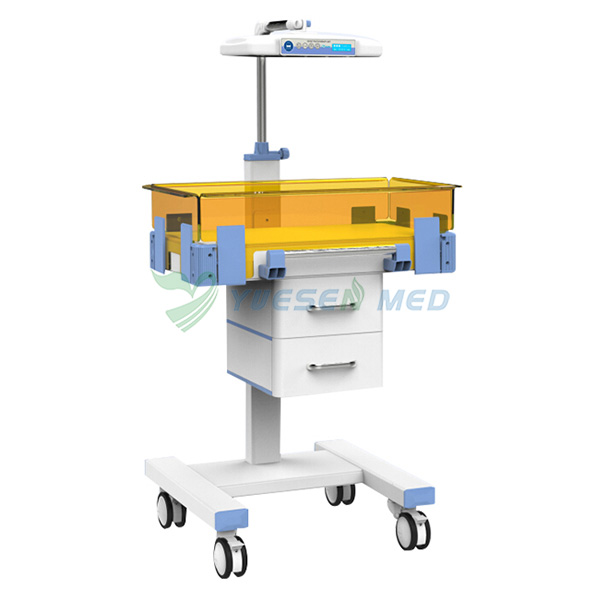
What is Neonatal Jaundice?
Before we get into the nitty-gritty of phototherapy, let's first understand what jaundice is. Jaundice occurs when there's a buildup of bilirubin in the blood. Bilirubin is a yellow pigment produced during the breakdown of red blood cells. In newborns, their immature liver may struggle to process this bilirubin efficiently, leading to a yellowing of the skin and eyes.
Why Do Newborns Get Jaundice?
You might be wondering, "Why do so many newborns experience this?" Well, several factors contribute to neonatal jaundice:
- Physiological Factors: Newborns are born with a higher number of red blood cells, which break down quickly.
- Breastfeeding Issues: Sometimes, if a baby isn't feeding well, it can lead to dehydration, exacerbating jaundice.
- Blood Type Incompatibility: If the mother's blood type is different from the baby's, it can lead to increased bilirubin production.
The Importance of Early Detection
Recognizing jaundice early is crucial. Most hospitals routinely check newborns for jaundice before they even leave the maternity ward. If detected early, treatment can begin promptly, preventing any severe complications.
Enter Phototherapy: The Light at the End of the Tunnel
So, how do we tackle jaundice? This is where neonatal phototherapy machines come into play. These machines use special lights to help break down bilirubin in the baby's skin, making it easier for the liver to process and eliminate it.
How Does Phototherapy Work?
The mechanics behind phototherapy are fascinating. The blue light emitted by these machines penetrates the skin and converts bilirubin into a water-soluble form, which can then be excreted through urine and stool. It's like turning a stubborn solid into a liquid that can flow freely away!
Types of Phototherapy
There are mainly two types of phototherapy used for treating jaundice:
- Conventional Phototherapy: This involves placing the baby under a bank of fluorescent lights, which emit blue light.
- Fiber-Optic Phototherapy: This method uses a special blanket with fiber-optic cables that emit light, allowing for more flexibility in positioning the baby.
The Role of Neonatal Phototherapy Machines
Neonatal phototherapy machines are specifically designed for the delicate needs of newborns. They provide controlled light exposure while ensuring the baby's safety and comfort.
Key Features of Phototherapy Machines
1. Adjustable Light Intensity: The machines allow healthcare providers to adjust the light intensity based on the baby's needs.
2. Temperature Control: Maintaining a stable temperature is crucial for newborns, and these machines often come with built-in heating elements.
3. Safety Mechanisms: Many machines are equipped with alarms to alert staff if the baby moves out of the optimal light zone.
The Benefits of Phototherapy
You might be thinking, "What's the big deal about these machines?" Well, the benefits are significant:
1. Quick Treatment
Phototherapy is a fast and effective treatment for jaundice. Most babies show improvement within 24 hours of starting therapy.
2. Non-Invasive
Unlike some other treatments, phototherapy is non-invasive. Babies don't need to undergo painful procedures, which is a relief for both the infants and their parents.
3. Increased Parental Involvement
With fiber-optic phototherapy, parents can hold their babies during treatment, fostering bonding and reducing stress for both parties.
Risks and Considerations
While phototherapy is generally safe, there are a few considerations to keep in mind:
1. Overheating
Babies can easily become overheated under the lights, so monitoring their temperature is essential.
2. Skin Irritation
Prolonged exposure to the light can sometimes cause skin irritation, so caregivers must keep a close eye on the baby's skin condition.
3. Eye Protection
The bright lights can be harmful to a baby's eyes, so protective eye patches are often used during treatment.
The Emotional Impact on Families
Jaundice can be a stressful experience for families. Seeing your newborn under bright lights can be concerning, and many parents feel helpless. However, knowing that phototherapy is a safe and effective treatment can provide some peace of mind.
Support for Parents
Healthcare providers play a crucial role in supporting families during this time. Providing clear information about the treatment process and expected outcomes can help alleviate anxiety.
Conclusion
Neonatal phototherapy machines are truly a game-changer in the fight against jaundice. They not only provide effective treatment but also offer hope and reassurance to families during challenging times. As technology continues to advance, we can expect even more improvements in the care and treatment of our tiniest patients. So, the next time you hear about a baby receiving phototherapy, remember—the light shining down on them is more than just a treatment; it's a lifeline.
FAQ
What is neonatal jaundice and why does it occur?
Neonatal jaundice is a condition characterized by the yellowing of a newborn's skin and eyes due to elevated levels of bilirubin in the blood. This buildup occurs because a newborn's liver may not yet be mature enough to process bilirubin efficiently. Factors contributing to jaundice include the natural breakdown of red blood cells, breastfeeding challenges, and blood type incompatibility between the mother and baby.
How does phototherapy treat jaundice in newborns?
Phototherapy treats jaundice by using special blue lights that penetrate the baby's skin. These lights convert bilirubin into a water-soluble form, which the body can easily eliminate through urine and stool. The treatment is non-invasive and typically begins shortly after jaundice is detected, often leading to significant improvement within 24 hours.
Are there any risks associated with phototherapy?
While phototherapy is generally safe, there are some risks to consider. Babies can become overheated under the lights, so their temperature needs to be monitored closely. Additionally, prolonged exposure can cause skin irritation, and protective eye coverings are necessary to shield the baby's eyes from the bright light.
How long does a baby usually need phototherapy?
The duration of phototherapy varies depending on the severity of the jaundice and the baby's response to treatment. Most infants require phototherapy for about 24 to 48 hours, but some may need longer treatment if their bilirubin levels remain high. Healthcare providers will monitor the baby's bilirubin levels closely to determine the appropriate duration.

What is Neonatal Jaundice?
Before we get into the nitty-gritty of phototherapy, let's first understand what jaundice is. Jaundice occurs when there's a buildup of bilirubin in the blood. Bilirubin is a yellow pigment produced during the breakdown of red blood cells. In newborns, their immature liver may struggle to process this bilirubin efficiently, leading to a yellowing of the skin and eyes.
Why Do Newborns Get Jaundice?
You might be wondering, "Why do so many newborns experience this?" Well, several factors contribute to neonatal jaundice:
- Physiological Factors: Newborns are born with a higher number of red blood cells, which break down quickly.
- Breastfeeding Issues: Sometimes, if a baby isn't feeding well, it can lead to dehydration, exacerbating jaundice.
- Blood Type Incompatibility: If the mother's blood type is different from the baby's, it can lead to increased bilirubin production.
The Importance of Early Detection
Recognizing jaundice early is crucial. Most hospitals routinely check newborns for jaundice before they even leave the maternity ward. If detected early, treatment can begin promptly, preventing any severe complications.
Enter Phototherapy: The Light at the End of the Tunnel
So, how do we tackle jaundice? This is where neonatal phototherapy machines come into play. These machines use special lights to help break down bilirubin in the baby's skin, making it easier for the liver to process and eliminate it.
How Does Phototherapy Work?
The mechanics behind phototherapy are fascinating. The blue light emitted by these machines penetrates the skin and converts bilirubin into a water-soluble form, which can then be excreted through urine and stool. It's like turning a stubborn solid into a liquid that can flow freely away!
Types of Phototherapy
There are mainly two types of phototherapy used for treating jaundice:
- Conventional Phototherapy: This involves placing the baby under a bank of fluorescent lights, which emit blue light.
- Fiber-Optic Phototherapy: This method uses a special blanket with fiber-optic cables that emit light, allowing for more flexibility in positioning the baby.
The Role of Neonatal Phototherapy Machines
Neonatal phototherapy machines are specifically designed for the delicate needs of newborns. They provide controlled light exposure while ensuring the baby's safety and comfort.
Key Features of Phototherapy Machines
1. Adjustable Light Intensity: The machines allow healthcare providers to adjust the light intensity based on the baby's needs.
2. Temperature Control: Maintaining a stable temperature is crucial for newborns, and these machines often come with built-in heating elements.
3. Safety Mechanisms: Many machines are equipped with alarms to alert staff if the baby moves out of the optimal light zone.
The Benefits of Phototherapy
You might be thinking, "What's the big deal about these machines?" Well, the benefits are significant:
1. Quick Treatment
Phototherapy is a fast and effective treatment for jaundice. Most babies show improvement within 24 hours of starting therapy.
2. Non-Invasive
Unlike some other treatments, phototherapy is non-invasive. Babies don't need to undergo painful procedures, which is a relief for both the infants and their parents.
3. Increased Parental Involvement
With fiber-optic phototherapy, parents can hold their babies during treatment, fostering bonding and reducing stress for both parties.
Risks and Considerations
While phototherapy is generally safe, there are a few considerations to keep in mind:
1. Overheating
Babies can easily become overheated under the lights, so monitoring their temperature is essential.
2. Skin Irritation
Prolonged exposure to the light can sometimes cause skin irritation, so caregivers must keep a close eye on the baby's skin condition.
3. Eye Protection
The bright lights can be harmful to a baby's eyes, so protective eye patches are often used during treatment.
The Emotional Impact on Families
Jaundice can be a stressful experience for families. Seeing your newborn under bright lights can be concerning, and many parents feel helpless. However, knowing that phototherapy is a safe and effective treatment can provide some peace of mind.
Support for Parents
Healthcare providers play a crucial role in supporting families during this time. Providing clear information about the treatment process and expected outcomes can help alleviate anxiety.
Conclusion
Neonatal phototherapy machines are truly a game-changer in the fight against jaundice. They not only provide effective treatment but also offer hope and reassurance to families during challenging times. As technology continues to advance, we can expect even more improvements in the care and treatment of our tiniest patients. So, the next time you hear about a baby receiving phototherapy, remember—the light shining down on them is more than just a treatment; it's a lifeline.
FAQ
What is neonatal jaundice and why does it occur?
Neonatal jaundice is a condition characterized by the yellowing of a newborn's skin and eyes due to elevated levels of bilirubin in the blood. This buildup occurs because a newborn's liver may not yet be mature enough to process bilirubin efficiently. Factors contributing to jaundice include the natural breakdown of red blood cells, breastfeeding challenges, and blood type incompatibility between the mother and baby.
How does phototherapy treat jaundice in newborns?
Phototherapy treats jaundice by using special blue lights that penetrate the baby's skin. These lights convert bilirubin into a water-soluble form, which the body can easily eliminate through urine and stool. The treatment is non-invasive and typically begins shortly after jaundice is detected, often leading to significant improvement within 24 hours.
Are there any risks associated with phototherapy?
While phototherapy is generally safe, there are some risks to consider. Babies can become overheated under the lights, so their temperature needs to be monitored closely. Additionally, prolonged exposure can cause skin irritation, and protective eye coverings are necessary to shield the baby's eyes from the bright light.
How long does a baby usually need phototherapy?
The duration of phototherapy varies depending on the severity of the jaundice and the baby's response to treatment. Most infants require phototherapy for about 24 to 48 hours, but some may need longer treatment if their bilirubin levels remain high. Healthcare providers will monitor the baby's bilirubin levels closely to determine the appropriate duration.
Related News
Read More >>
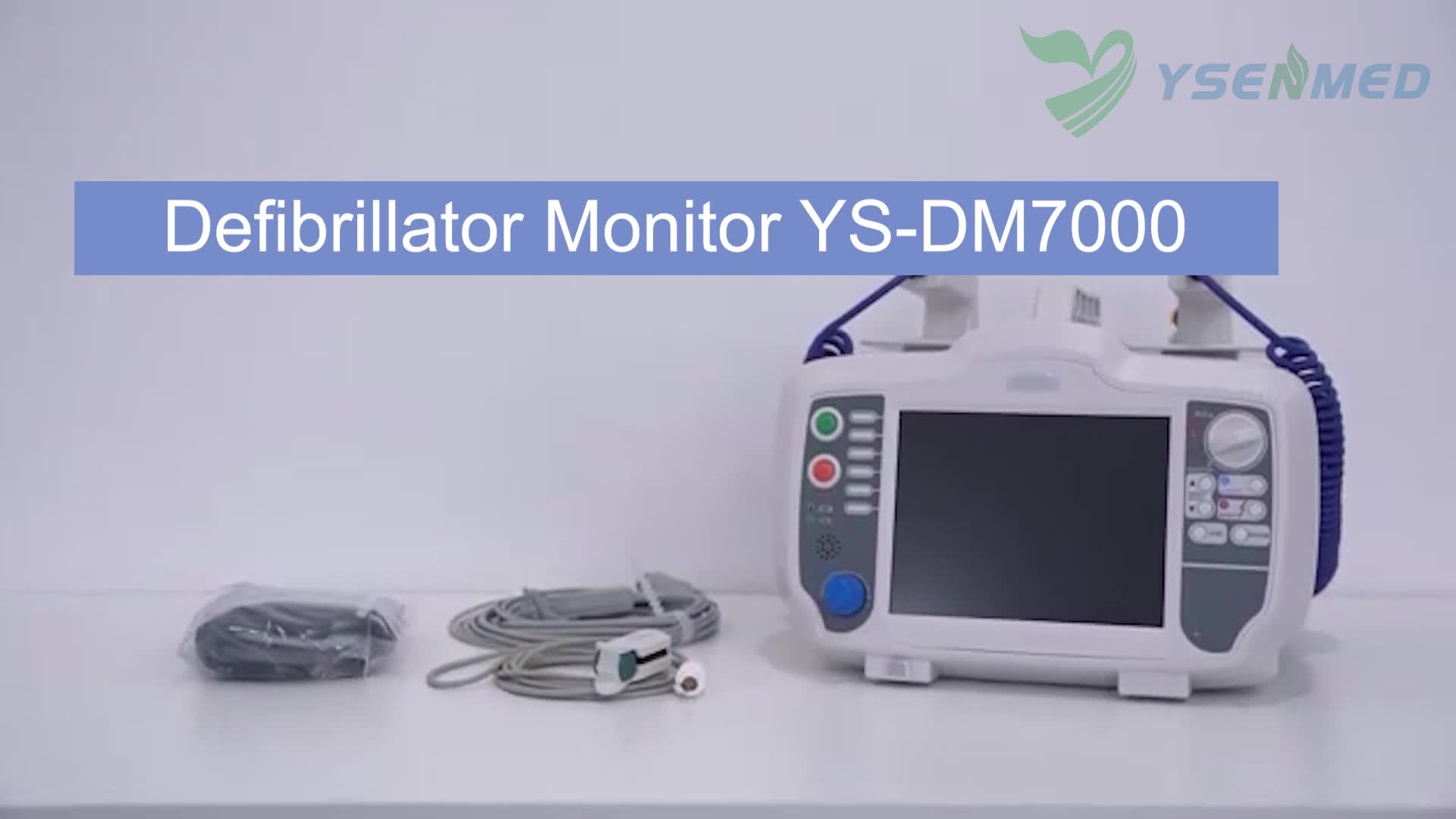 Introduction video of YSENMED YS-DM7000 Defibrillator Monitor
Introduction video of YSENMED YS-DM7000 Defibrillator Monitor
May .02.2025
Here we share the introduction video of YSENMED YS-DM7000 Defibrillator Monitor.
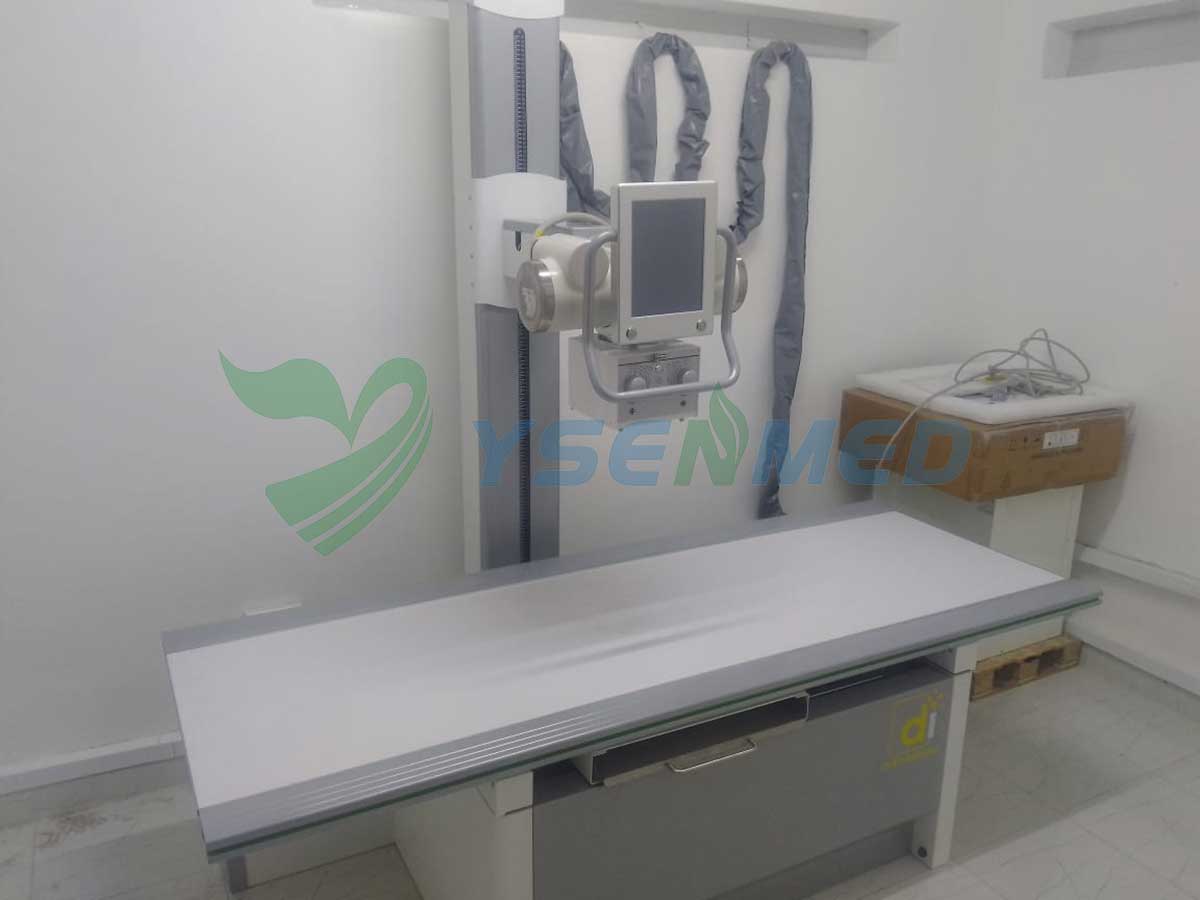 Kenyan distributor sets up YSX500D DR system and considers re-purchase.
Kenyan distributor sets up YSX500D DR system and considers re-purchase.
May .01.2025
Our Kenyan distributor has successfully set up the YSX500D 50kW digital x-ray system in a hospital, and considers purchasing another 32kW x-ray system.
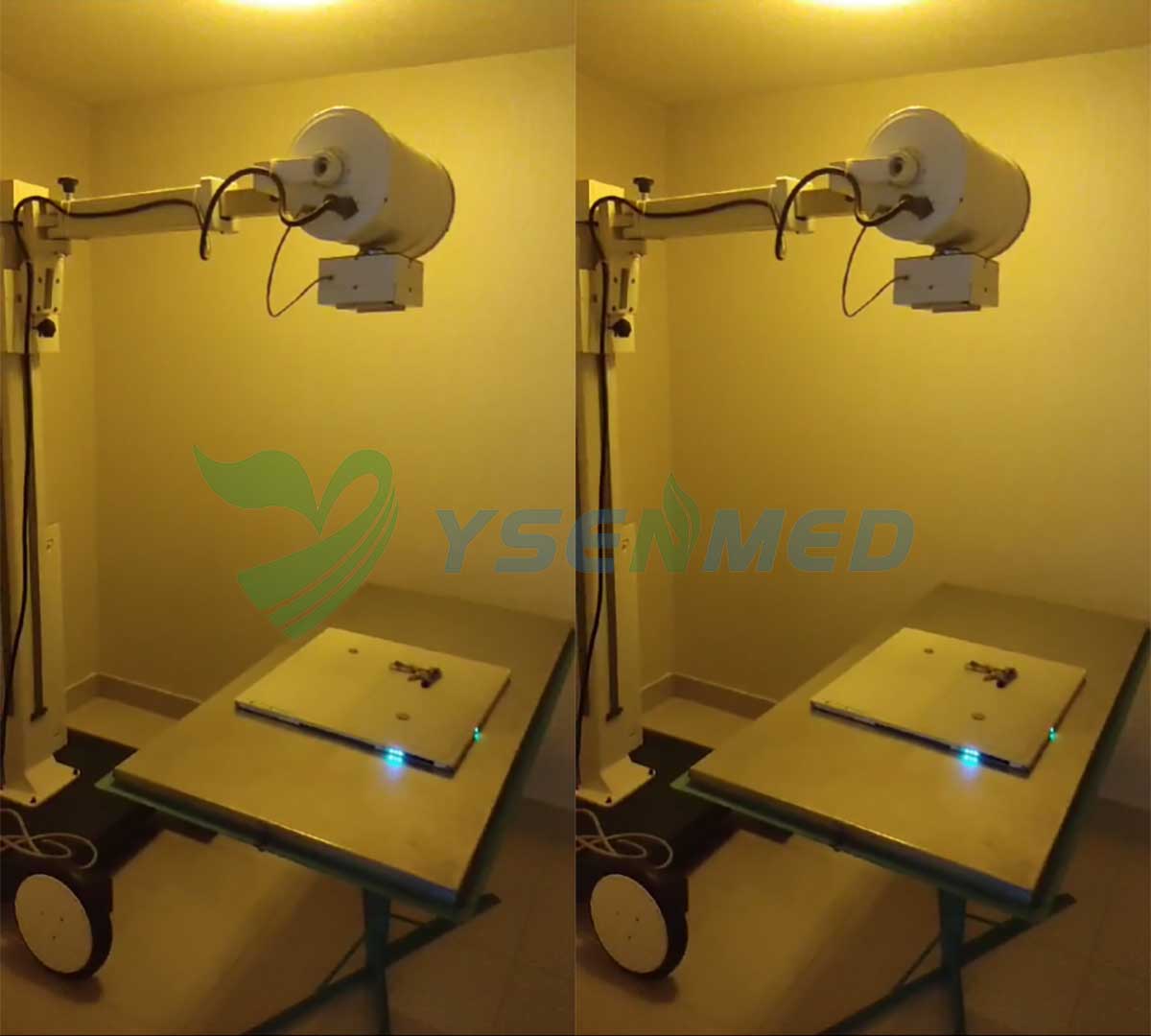 YSFPD-M1717V VET flat panel detector helps digitize the x-ray in a Peruvian vet clinic
YSFPD-M1717V VET flat panel detector helps digitize the x-ray in a Peruvian vet clinic
Apr .30.2025
With the professional after-sales assistance from YSENMED team, Peruvian vet has managed to upgrade his mobile analog x-ray system with YSFPD-M1717V VET wilress flat panel detector and the images come out clear and highly satisfactory.
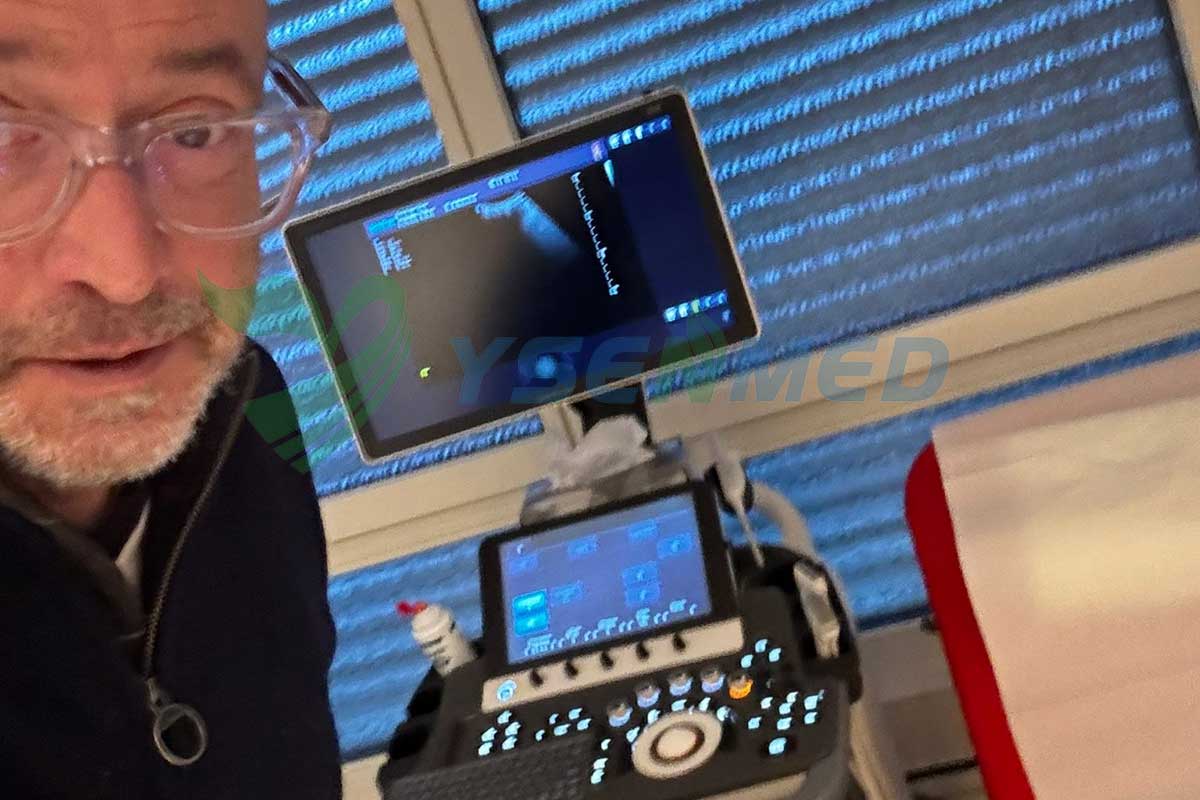 The well functioning SonoScape S50 ultrasound system makes Dr. Roger happy
The well functioning SonoScape S50 ultrasound system makes Dr. Roger happy
Apr .29.2025
Dr. Roger is so excited to receive the SonoScape S50 color doppler ultrasound system, and he can't wait to put it into practice.



